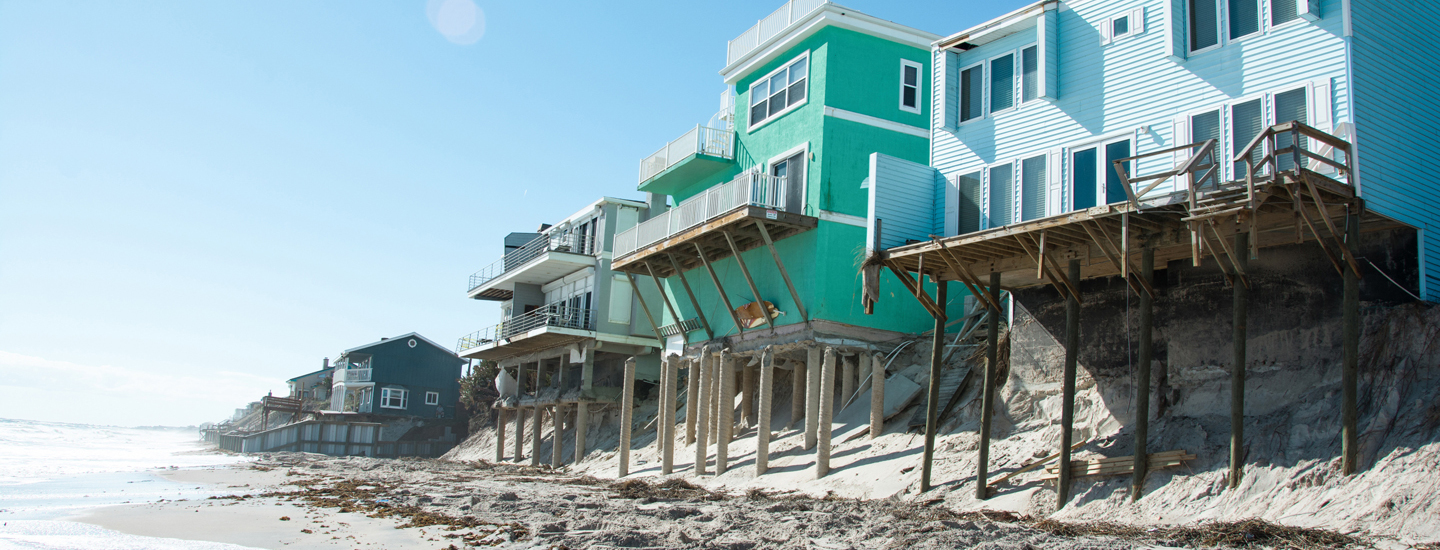
Today the Surfrider Foundation released the 2018 State of the Beach Report Card, which grades 30 U.S. states, in addition to the territory of Puerto Rico, on their policies to protect our nation’s beaches from coastal erosion, irresponsible beach fill, sea level rise, and poorly planned coastal development. The results reveal that 23 out of 31 states and territories assessed are performing at adequate to poor levels, with most of the lowest grades located in regions that are heavily impacted by extreme weather events. Surfrider’s report card clearly indicates that not only do the majority of states need to make improvements, but they also require continued support at the federal level for the Coastal Zone Management Act and funding for agencies such as NOAA, to protect our coastlines for the future.

America’s coastlines are as diverse as its people. From rocky outcrops on the West Coast and sugar sand beaches in the Gulf of Mexico and Florida, to the expansive waters of the Great Lakes and the barrier islands and bays of the North and Mid-Atlantic, these special places support communities, unique ecosystems and fuel local economies. About 40% of our nation resides along America’s unique coastlines and the ocean economy contributes more than $352 billion to U.S. GDP annually. However, beaches are disappearing at an alarming rate, due to both shifting natural processes and human intervention.
Coastal erosion causes approximately $500 million in property loss annually in the U.S., including damage to structures and loss of land. To mitigate erosion impacts, the federal government spends an average of $150 million every year on beach replenishment and other shoreline erosion control measures. In addition, scientists predict that sea levels could potentially increase by up to six feet by 2100, which would impact coastal economies, public access, recreation and healthy ecosystems.
In response, the Surfrider Foundation has produced the State of the Beach Report Card to serve as a tool to empower concerned citizens to work with coastal municipalities and ensure that their local communities actively protect coastal resources. The report is also intended to provide a basis for decision-makers and agencies to form proactive, long-term solutions for increased coastal protection for the future.
Key Highlights:
- Surfrider’s report finds that only eight states are doing a ‘fair or better’ job (e.g., earned grade of A or B based on relevant criteria) of protecting beaches.
- Most of the states that experience extreme weather events lack solid coastal preservation and sea level rise policies.
- Since Surfrider released its inaugural report card in 2017, five states have made improvements to coastal policies, with advancements in sea level rise planning and coastal resiliency in light of climate change.
- North Carolina has committed to joining the Paris climate agreement as a result of extreme damage caused by Hurricane Florence. The state has pledged to reduce North Carolina’s greenhouse gas emissions to 40 percent below 2005 levels by 2025. While this is helpful for overall climate change mitigation, the state still has much work to do to improve laws and policies that protect coastal resources and prepare for sea level rise.
- The higher scoring states had strong policies regarding coastal building setbacks, prohibitions against coastal armoring and rebuilding in coastal hazard areas, and support for incorporating sea level rise and coastal adaptation into planning documents.
- Out of 31 states and territories assessed, 23 are doing a ‘barely adequate to poor’ job (with an earned grade of C or less). These states tend to have less stringent policies regarding development in hazardous coastal zones, sediment management, ineffective or nonexistent prohibitions on coastal armoring, and/ or little in the way of policies that require the incorporation of sea level rise projections into coastal planning.
- The latest science and recent damage from coastal storms show that our nation’s beaches are under siege and highly vulnerable to erosion, and our coastal cities and neighborhoods are at high risk to dangerous flooding.
- The report findings underscore why NOAA’s Coastal Management Program must be adequately funded to support stewardship of our nation’s beaches. Adopting policy recommendations provided in this report will be imperative for all coastal states in the future. As recently reported by the Union of Concerned Scientists, over the next 30 years, sea level rise alone (not including coastal storms and rains) is estimated to cause chronic flooding at over 300,000 homes and commercial properties in the contiguous U.S. The total value of these properties is estimated at $136 billion. In fact, by 2100, sea level rise is estimated to cause chronic flooding at up to 2.5 million homes.
View the State of the Beach Report Card press release.
